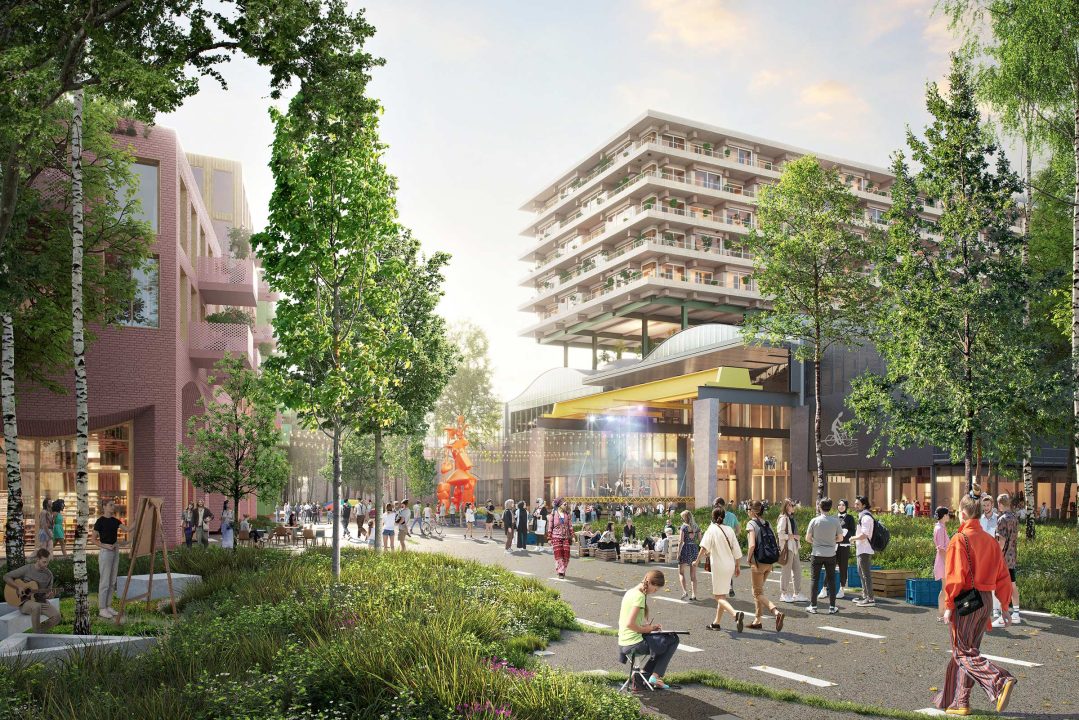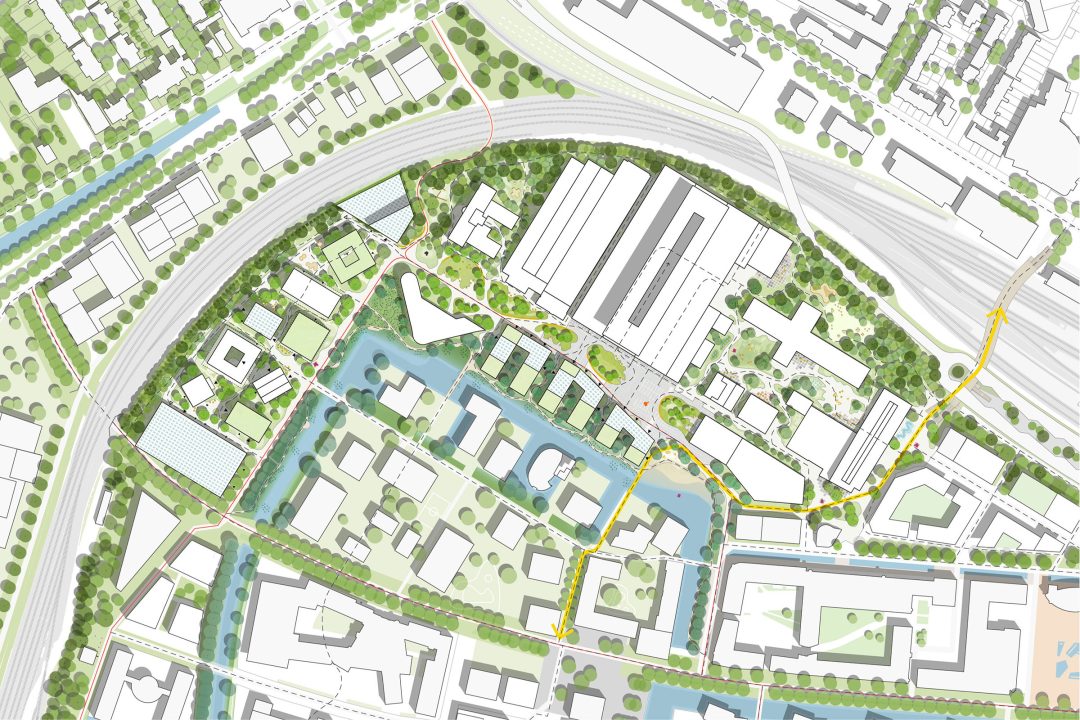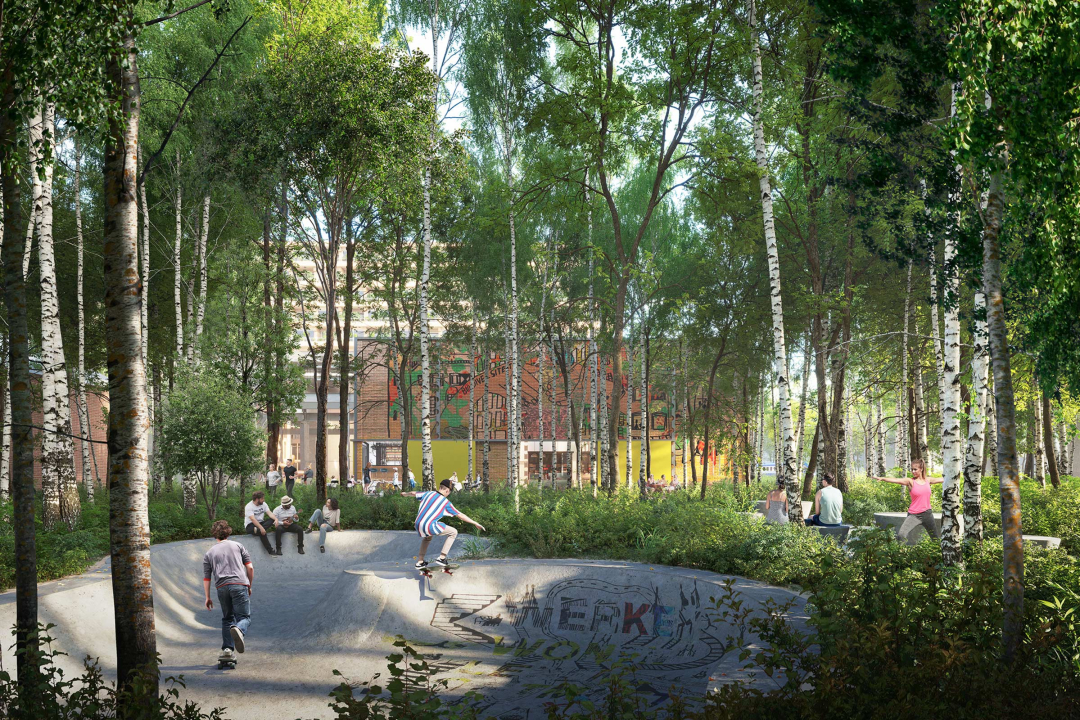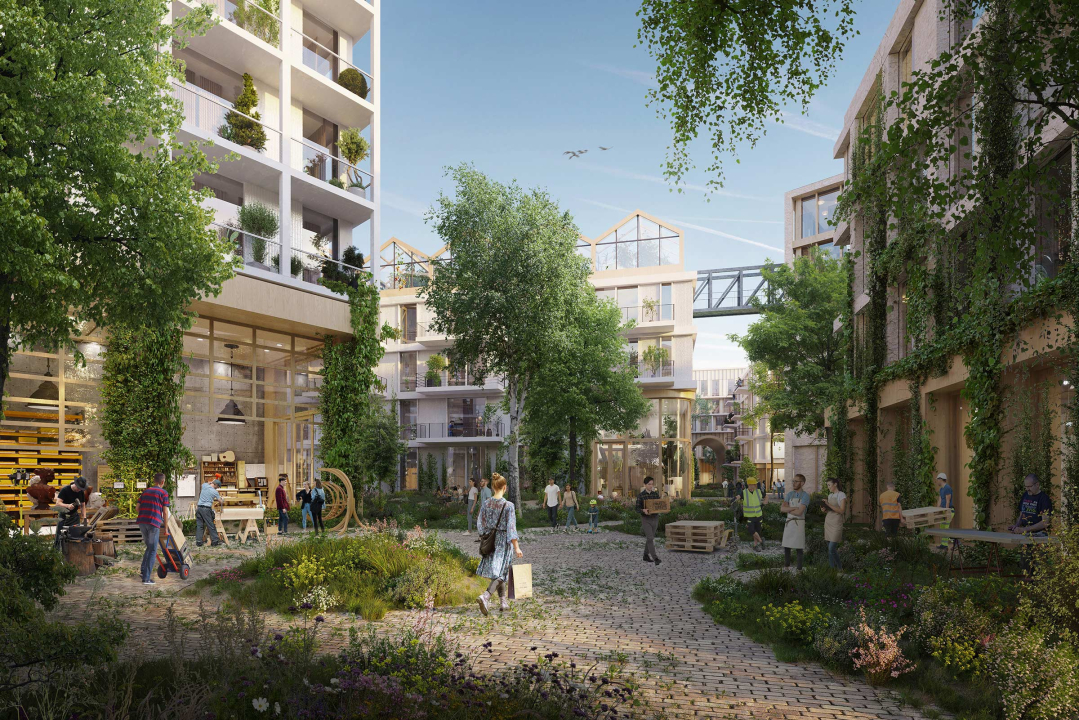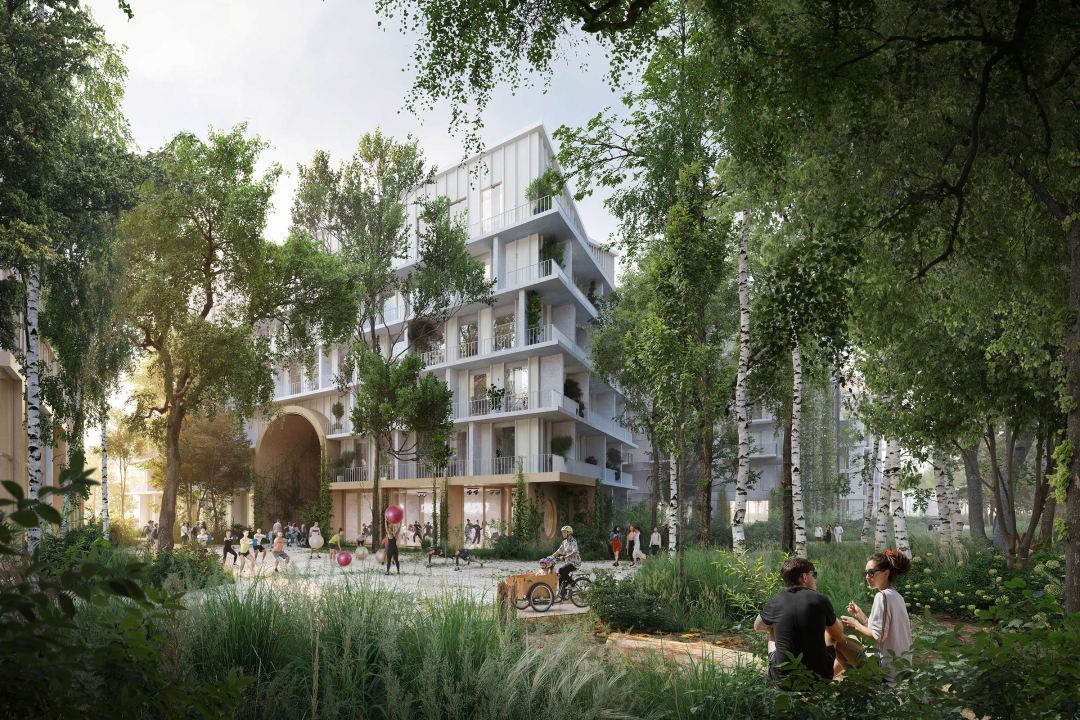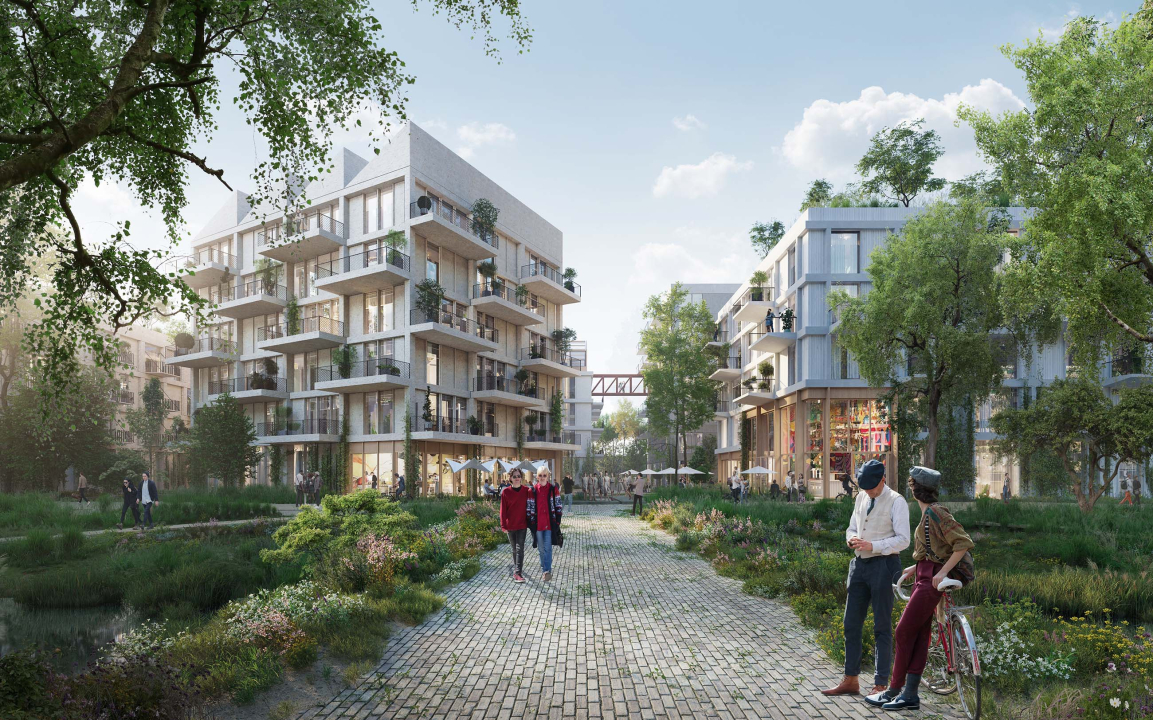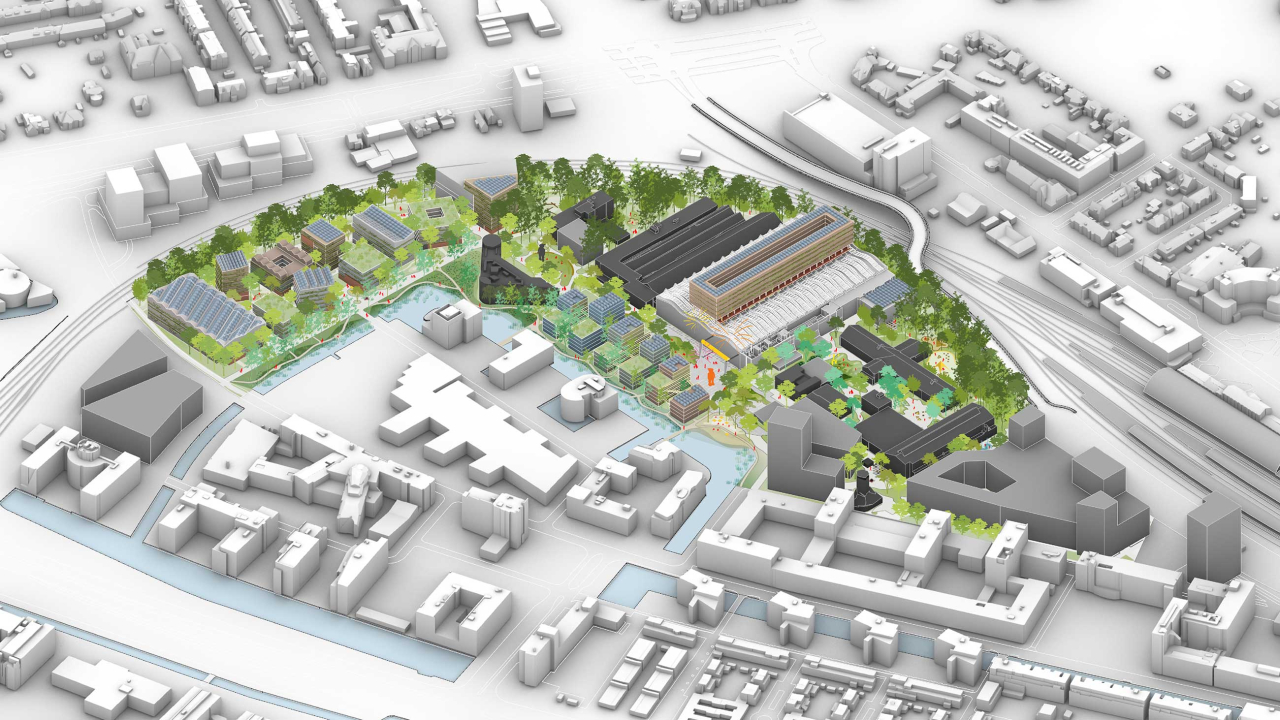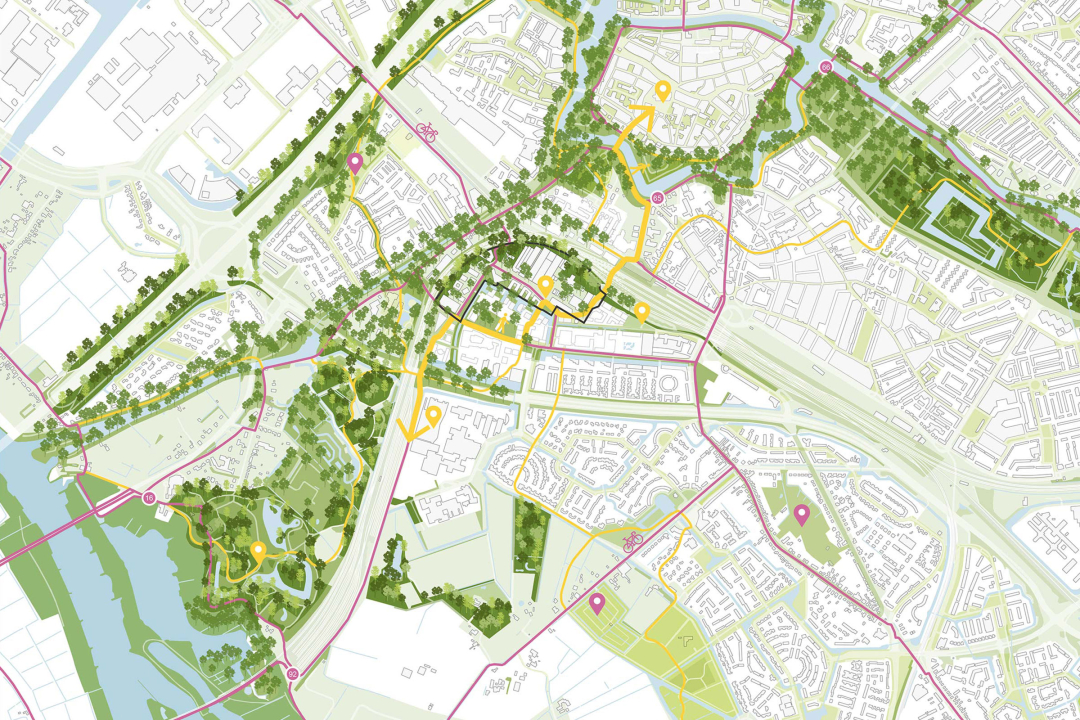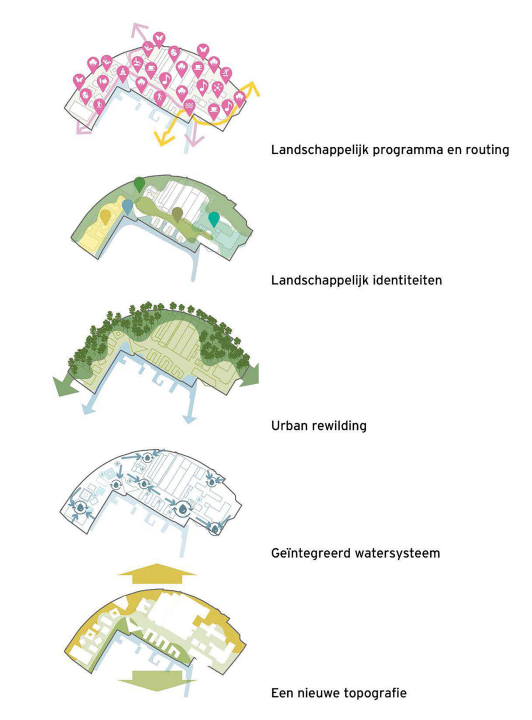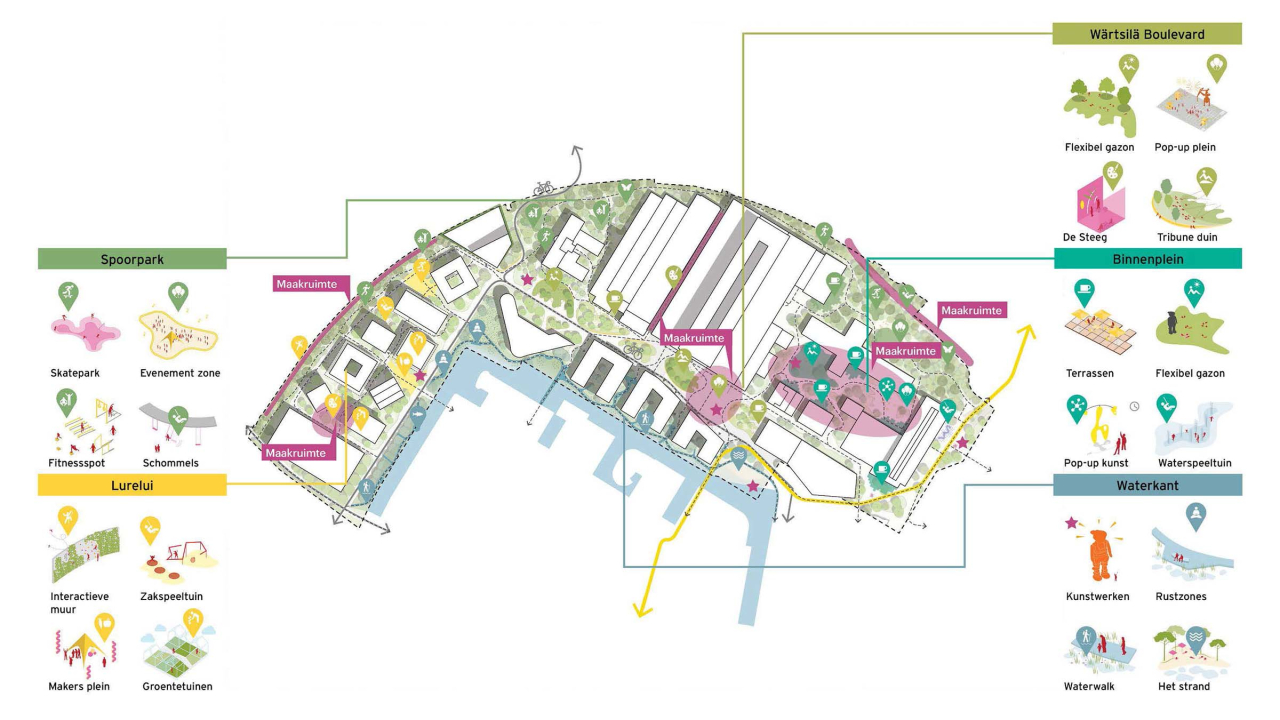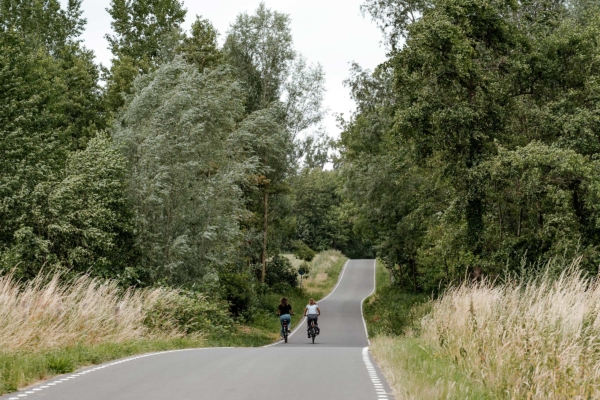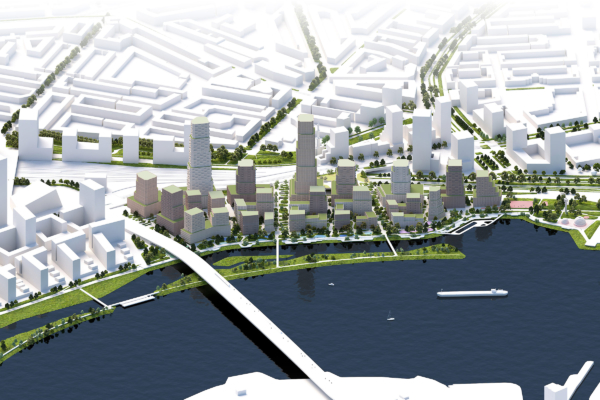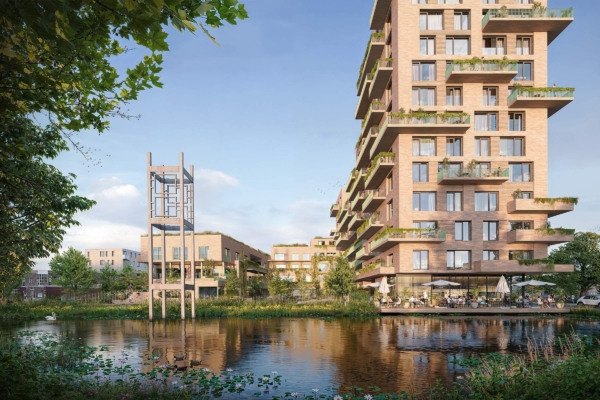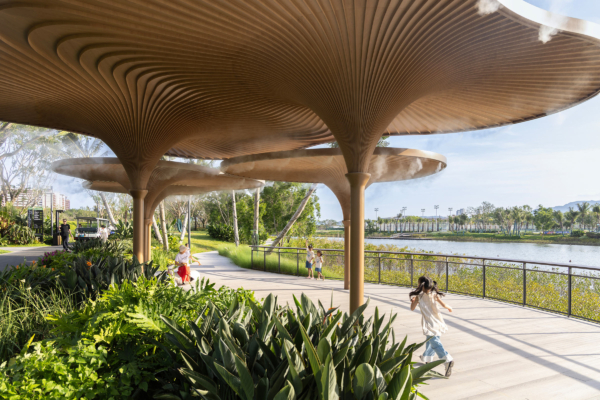The young landscape builds on its history, from an industrial site to a dynamic living and working landscape. Most importantly, it is a young and spontaneous urban landscape where nature can take its course. A nature-friendly bank along the Hanze Singel and the wooded urban wilderness of the Spoorpark along the railway are two robust green-blue structures connecting the inner city to the IJssel Valley. The urban dunes shaping the inner public spaces contrast the fragments of the existing industrial elements, creating an unexpected and exciting space. As a largely car-free inner-city area, WärtZ gives more space for biodiversity, urban rewilding, and outdoor social encounters than if the public space was used for roads, crossings, and car parking. WärtZ is to be an energy-positive, circular and CO2-neutral urban development, aligning with the city’s sustainability ambitions and the future of our planet.
Water retention
Water retention mainly occurs in green spaces through wadis, nature-friendly banks, and helophyte filters. While the larger paved areas are present to host bigger programming, The larger paved programming areas have underground retention, which acts again like a big sponge.
A springboard for the city and regional businesses
Wild, Art, Raw, Tech, and Zwolle, encapsulated in its unique name: WärtZ. The name captures the district’s bustling atmosphere and alludes to the existing Wärtsilä hall with its typical, undulating roof. While the roof remains the same, everything around it will give place to a hub for innovation, creativity, and forward-thinking collaboration to address future challenges. This sets WärtZ to become a pivotal green and innovation district, acting as a catalyzer for talent and businesses across the region.
The winning team will further develop the plan in close cooperation with (future) users and businesses. The first phase is expected to start in 2025.
